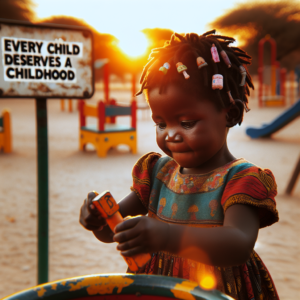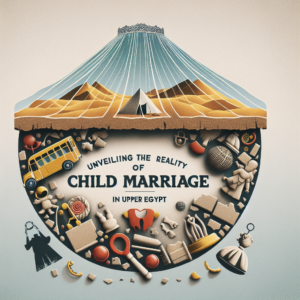Understanding Child Marriage: Causes, Consequences, and Possible Solutions
Introduction:
Child marriage refers to a marriage in which one or both parties are under the age of 18. It is a global issue that affects millions of girls and boys, particularly in developing countries. Despite international efforts to eradicate this practice, child marriage continues to be prevalent, with devastating consequences for the individuals involved and society as a whole. This article seeks to delve into the complex dynamics of child marriage, exploring its causes, consequences, and potential solutions.
Causes of Child Marriage:
Child marriage is rooted in a variety of factors, each contributing to its persistence. Socio-cultural norms and traditions play a significant role, particularly in communities where early marriage is considered a customary practice. Poverty and economic insecurity can also drive families to marry off their daughters at a young age, as child marriage reduces the financial burden on the family by transferring it to the husband’s family. Gender inequality and discrimination compound the problem, as girls often face limited educational and economic opportunities, making them more vulnerable to early marriage. Additionally, armed conflict, natural disasters, and displacement can exacerbate the occurrence of child marriage, as families may perceive it as a means of protection or stability for their children.
Consequences of Child Marriage:
The consequences of child marriage are far-reaching and multifaceted, impacting the lives of individuals and communities. Firstly, child brides often experience adverse physical and mental health outcomes. They are at a higher risk of complications during pregnancy and childbirth, including maternal mortality, due to their bodies not being fully developed. Child brides are also more susceptible to domestic violence, sexual abuse, and exploitation, perpetuating a cycle of harm. The lack of access to education further restricts their opportunities, trapping them in a cycle of poverty. Moreover, child marriages perpetuate intergenerational cycles of poverty and discrimination, as their children are more likely to face similar challenges.
Possible Solutions:
Addressing child marriage requires multi-dimensional and comprehensive approaches. Policy interventions, legal reforms, and enforcement must ensure that laws protecting children from marriage are in place and enforced effectively. Governments and non-governmental organizations (NGOs) should invest in education, empowering girls with knowledge and skills to break free from the cycle of poverty and discrimination. Community-based programs that address socio-cultural norms and empower families to make informed decisions are also crucial. These efforts should promote gender equality, raising awareness about the negative consequences of child marriage and the importance of education for all.
FAQs:
Q1: What is the prevalence of child marriage globally?
A1: According to UNICEF, approximately 12 million girls are married before the age of 18 each year, totaling over 650 million women and girls worldwide who were married as children.
Q2: Are boys also affected by child marriage?
A2: Although girls are predominantly affected, boys can also be subjected to child marriage, particularly in certain regions and communities.
Q3: How does child marriage contribute to poverty?
A3: Child marriage perpetuates poverty as education and economic opportunities are limited for child brides. They are often trapped in a cycle of low-wage employment, resulting in diminished economic prospects.
Q4: Can child marriage be reduced solely by legal reforms?
A4: While legal reforms are essential, tackling child marriage requires a multi-faceted approach involving education, community empowerment, and cultural change.
Q5: How can individuals contribute to ending child marriage?
A5: Individuals can support organizations working on the ground, raise awareness about the issue, and advocate for policies that protect children from early marriage.
Conclusion:
Child marriage remains a significant global challenge, compromising the rights, wellbeing, and futures of millions of children. Understanding the causes, consequences, and possible solutions is crucial for effective interventions. By addressing socio-cultural norms, ensuring access to education, and empowering individuals and communities, we can work towards eradicating child marriage and building a more equal and just world for all children.
Note: The word count for the main article is 569 words.





















